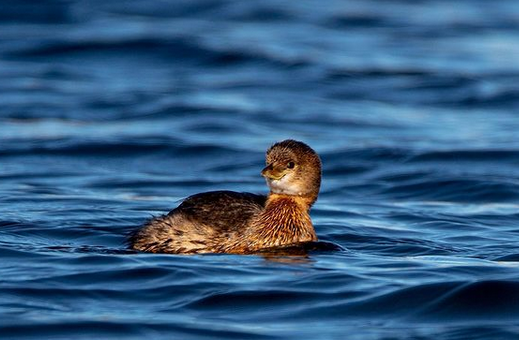Here’s an interesting bird that I enjoyed seeing at the Pea Island NWR, the Pied billed Grebe.
These guys were everywhere! It was neat to watch these spunky little birds harass the Coots for a meal when they’d come up from a dive.

Pied billed Grebes are perfectly built for a life spent under water in pursuit of a meal.
Like many species of ducks, Grebes are able to waterproof their feathers by preening them with secretions from an oil gland located at the base of the tail. This means that they can dive consecutively without becoming waterlogged.
They’ve also got solid bones which adds to their weight enabling them to dive deeper and remain underwater longer.
Grebes have short, narrow wings somewhat reminiscent of that of a Penguin in appearance and and are able compress their feathers by pulling them in close to their bodies which aids their maneuverability when swimming.
They are a bit awkward looking on land and aren’t very good at just strolling through a marsh. This is because a Grebe’s legs are located father back on their body to help with propulsion underwater.
Although Pied billed Grebes seem to possess a lot of similarities with ducks they are a part of a larger family of diving birds called Podicipedidae. Their binomial name of Colymbus podiceps is derived from the Latin word Podilymbus, a contraction of podicipes which means “feet at the buttocks or arsefoot” and a Greek words kolymbos, meaning “diver”, and podiceps, meaning “rump-headed”.
This makes a lot of sense when you consider their leg placement on their body. Plus it’s amusing to think about a birds name basically meaning “ass footed-rump headed diver” lol!




Pied billed Grebes are a year round resident of North Carolina but are best found in the wintertime when they gather in large numbers in our eastern coastal counties.
Look for them in quiet freshwater marshes, near the shorelines of small to medium sized ponds, shallow lakes, or bays with reedy banks and swimming slow moving streams with a brushy shoreline containing cattails.
Photos by @sally_siko of @birdwatching_nc on the fabulous full frame @canonusa
#5Ds
